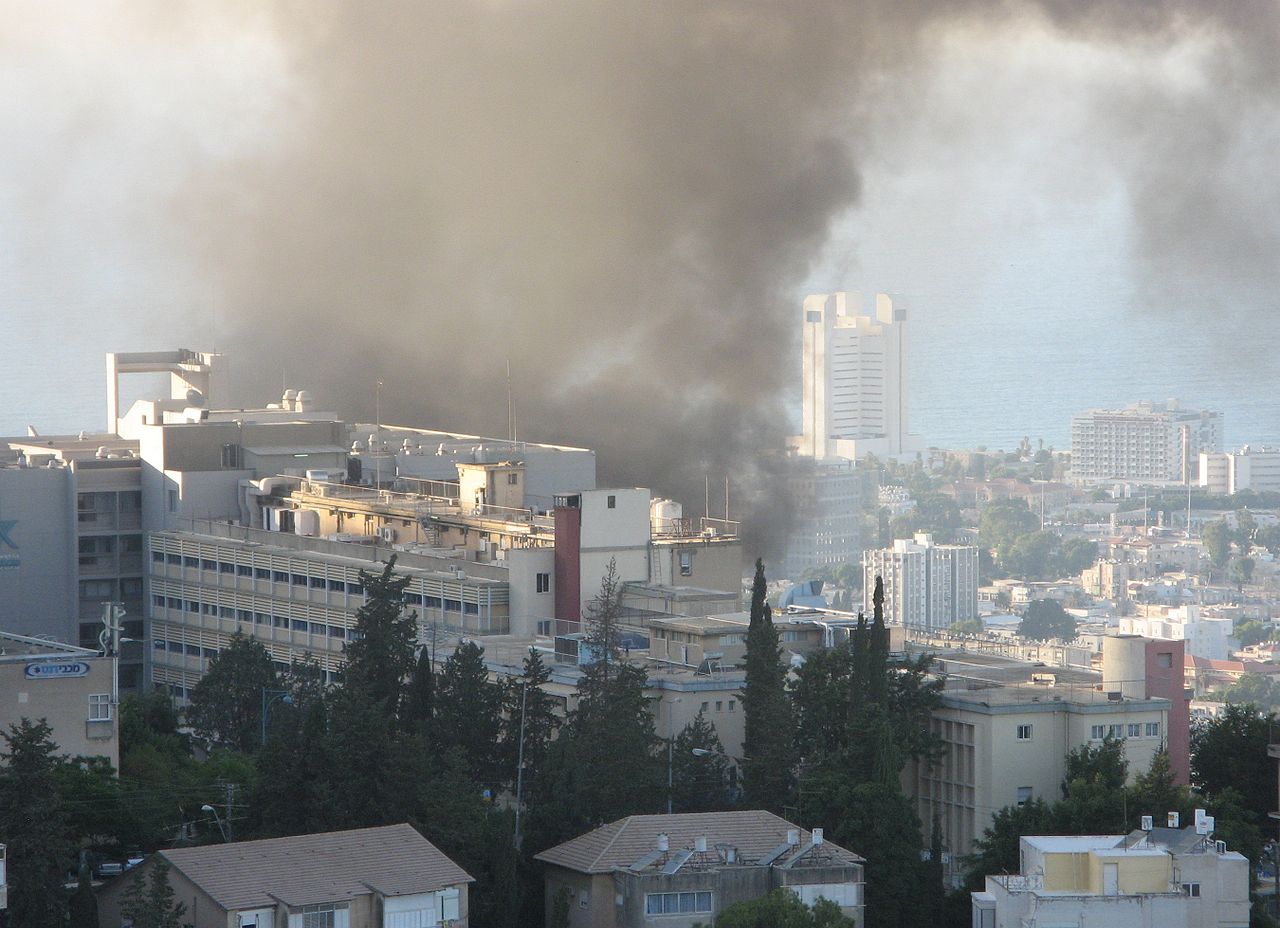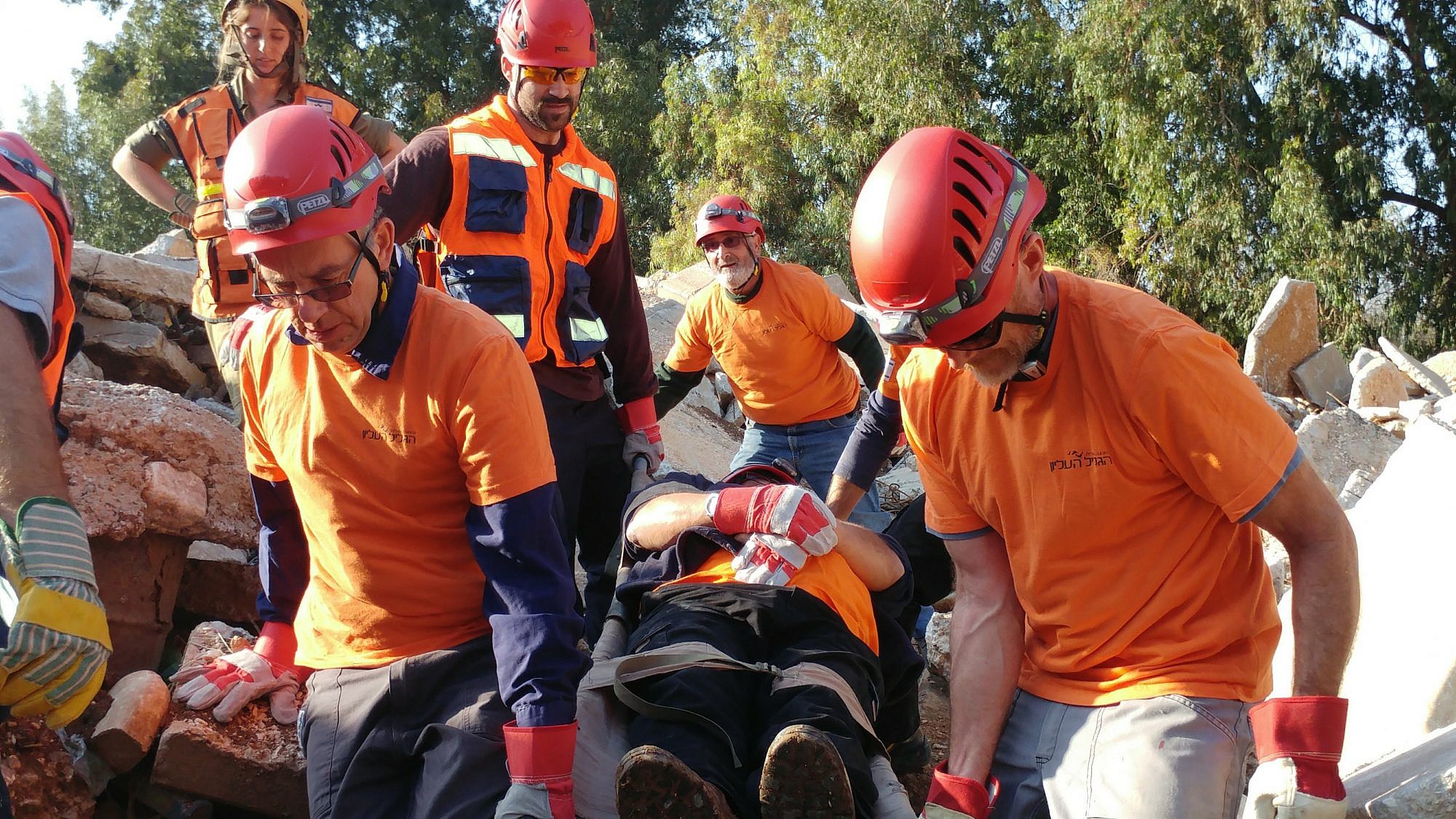With Hezbollah pointing more than 120,000 projectiles at Israeli cities, towns and villages, it is clear to emergency and defense planners that any eruption of a new armed conflict will not resemble previous wars.
The essence of Hezbollah’s war doctrine—and that of its patron, Iran—is to direct heavy fire at Israel’s soft underbelly: its civilian front.
On the military front, the Israel Defense Forces is drawing up offensive plans to deal with this threat; at the same time, on the defensive front the military is also working closely with emergency responders and local authorities to improve general readiness.
Col. Itzik Bar, head of the IDF Home Front Command’s Northern District, which prepares noncombatants for war, told JNS: “The home front will always be surprised. In war, even if you prepare and take steps to defend, there will be a change in perception among civilians. Our job, as part of the preparations, is to meet this challenge. To recover from surprises quickly and return things to full functionality.”
Bar provided a glimpse into the updated intelligence assessments of the threat from the north. In the 2006 Second Lebanon War, Hezbollah fired 6,700 unguided rockets during the course of three weeks; none of them reached further south than the northern city of Hadera.
“Today, they have the ability to hit all of Israel,” he said. “They are working on getting accurate rockets since unguided projectiles mostly fall in open areas. Accurate means more effective fire. Hezbollah could try to target national, sensitive infrastructure.”
Several hundred rockets per day could explode in northern Israel, Bar said, though this rate of fire “will be influenced by the things we do.”
Hezbollah’s projectiles have also gotten bigger. In 2006, it fired mostly 122-mm rockets with small warheads of 10 to 15 kilograms. Now, it is also stockpiling significantly bigger rockets with larger warheads.

Bar noted that in Syria, Hezbollah has gained valuable combat experience, which they would seek to use against Israel in the future in the form of sending well-trained cells into Israel via land and making beach landings from the sea to conduct raids. “Over the past four years, Hezbollah has built up experience in Syria,” the commander stated.
“And we haven’t discussed the threat of cyber attacks,” he added.
Working on more focused alerts
In response, the Home Front Command has taken a series of steps to get civilians prepared.
According to Bar, these measures include training with and cooperating closely with local authorities over a three-year training cycle. Additionally, the command is installing “war rooms” (also known as command and control centers) in all local authorities, which will allow them to track and control units such as local police and rescue teams.
These rooms are being fitted with the means to keep them functional, such as incorporating electric generators.
“We are training first-response teams—these are volunteers—that will be sent out by the local authority,” added Bar. “In addition, we are improving alerts, making them more pinpoint- and area-specific. We want more focused alerts, so that only the population that is under threat goes into protected areas.”
Alerts will go out through the traditional sirens, and via television screens, computers and smartphones, so that “they will be felt everywhere,” said Bar. Through them, “we will issue clear, life-saving instructions.”
One of the biggest areas of concerns for emergency planners is the shortage of bomb shelters in communities close to the Lebanese border, which would be under heavy fire. Bar said the command had begun improving the situation. “We have to make the bomb shelters habitable. That means air-conditioning. We have to be able to communicate with civilians inside. So we’re equipping them with wi-fi,” he said.
“In the end, civilians will not encounter the Home Front Command [during a war], but rather, the local authority, the police, the fire service, Magen David Adom [paramedics]. We are training closely with all of them and have a unified command system, which will let us see them all,” explained Bar.
Israel police spokesman Micky Rosenfeld added that police sapper units are the first responders to rocket-attack scenes. “They arrive to safeguard the area and prevent injuries,” he said. “Our response is rapid and life-saving.”
‘Evacuation no longer a dirty word’
The Home Front Command is also working on evacuation plans for areas “where the IDF would need full freedom of operation, or where we can’t provide alerts or life-sustaining services,” said Bar.
The decision to evacuate will be made the government, and unlike the chaotic scenes of the 2006 war, evacuations should be more orderly.
Aviv Leshem is spokesman of the Upper Galilee Regional Council spokesman, home to about 20,000 residents who live in 29 villages—22 of which are located close to the Lebanese border. He expressed concern over the fact that people will have to run to a bomb shelter and could be exposed to injuries during a war since older homes don’t have rocket-proof rooms (newer ones do).
“This is certainly one of the factors that make evacuation no longer a dirty word,” Leshem told JNS. “Once, it was seen as abandonment and a lack of strength. Now, the manner of combat has changed.”
He said “a lot of people will simply take their families and cars, and head south. That’s fine. Our working assumption is that people will do this on their own. What’s important to us is that this is done in an orderly way. We are working on a plan, it’s not a secret, together with the Home Front Command to open what we call a ‘second local council.’ ”
This refers to the Jordan Valley Regional Council south of Tiberias, which will absorb evacuees from the Upper Galilee. “It will be less targeted,” noted Leshem. “Evacuees will head there in organized transport or independently. We’ve had meetings with this council. Lists and rooms have been prepared to host evacuees. We know where people will sleep and eat, and even where children will study.”
Leshem said the council’s working assumption is that the state “will not know how to respond to our civilian needs in the first days,” as it will be too busy supplying basic services to the major cities.
As a result, the Regional Council has been training its responses for war. Armed civilian-response teams remain on stand-by for incidents. The council is building bomb shelters, improving lighting and equipping its war room with communications equipment.
It has also built teams of specialists to answer some of the various needs of civilians under fire. The teams include a security coordinator, a social worker, someone who is responsible for the elderly and who can assist those with special needs.
The council is also testing its ability to distribute critical information, food and water.
“Our working assumption is that in the first days, the area will be attacked in a very major way,” said Leshem. “Our third assumption is that the war will begin with a surprise, and therefore, we must be ready.”
Bar summed up what he thought will imbue civilians with a sense of security, even during tough times, saying “in the end, civilians want to know that their authorities are functioning, and that the authorities know how to guide them in the right and professional manner. And this is what we are preparing for year-round.”


























